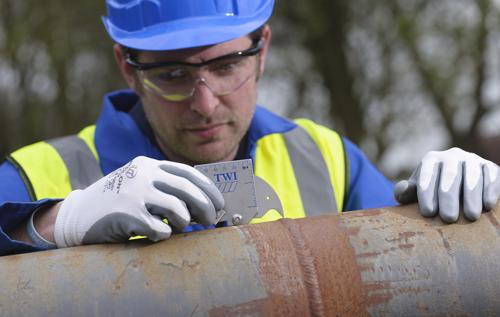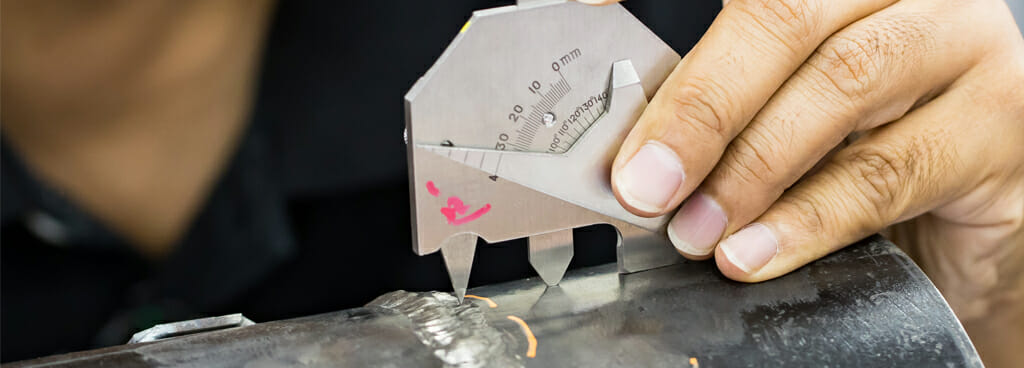A Comprehensive Guide to Comprehending Exactly How Welding Evaluation Works: Methods, Criteria, and Finest Practices for High Quality Assurance in Metal Fabrication
Understanding the ins and outs of welding evaluation is critical for maintaining the honesty of metal manufacture. Executing ideal practices can dramatically enhance top quality assurance procedures. The landscape of welding inspection is not without its difficulties.
Importance of Welding Evaluation
Although welding is a critical process in numerous sectors, its honesty straight affects the safety and performance of frameworks and components. Effective welding assessment is essential for determining issues that could jeopardize the high quality and durability of welded joints. This procedure makes certain adherence to established requirements and standards, which are important for preserving architectural integrity and operational dependability.
Welding assessment offers numerous purposes, including confirming that the welding process has actually been implemented appropriately, assessing the quality of materials utilized, and verifying that the ended up item fulfills governing and industry requirements (Houston Welding Inspection). Through extensive examination, possible concerns such as porosity, splits, and insufficient blend can be detected early, reducing and avoiding expensive repair work safety dangers
In addition, consistent welding assessments foster confidence among stakeholders, consisting of designers, customers, and regulative bodies, by showing a commitment to quality control. The relevance of welding evaluation can not be overstated; it is integral not just for conformity with lawful demands but also for boosting the total performance of welded frameworks. Inevitably, a durable welding evaluation program is a proactive measure that safeguards versus failures, guaranteeing the longevity and dependability of welded components in their desired applications.
Usual Welding Examination Methods

Aesthetic assessment is the very first line of defense, permitting examiners to identify surface area problems such as cracks, damages, or incomplete blend. Radiographic screening utilizes X-rays or gamma rays to disclose interior flaws, making it excellent for complicated welds. Ultrasonic testing utilizes high-frequency sound waves to identify subsurface flaws, providing specific measurements of weld honesty.
Magnetic bit screening is efficient for ferromagnetic materials, highlighting surface area and near-surface suspensions when fragments are applied to a magnetic area. On the other hand, color penetrant testing utilizes a fluid dye to reveal surface-breaking defects, making sure that even the tiniest flaws are found.
Each technique has its toughness and limitations, typically demanding a combination of approaches for comprehensive evaluation - Houston Welding Inspection. By using these inspection methods, quality assurance in steel fabrication is accomplished, making sure that welded structures satisfy safety and security and performance requirements
Sector Standards for Welding


The American Welding Culture (AWS) and the American National Standards Institute (ANSI) are two prominent organizations that establish welding requirements. AWS D1.1, for the original source instance, details the demands for welding steel frameworks, while AWS D1.2 concentrates on light weight aluminum. Worldwide, the ISO 3834 typical addresses top quality needs for blend welding, giving a structure relevant throughout nationwide borders.
Ideal Practices for Quality Control
Quality assurance in welding is paramount to attaining long lasting and risk-free building and constructions. Carrying out best practices makes sure that every weld meets the called for criteria and requirements. First, developing an extensive quality monitoring system (QMS) customized to the particular welding project is crucial. This QMS must define treatments, roles, and duties to alleviate risks and improve accountability.
Regular training and these details qualification of welding personnel are important for keeping an experienced labor force. Continual education on the newest welding strategies and technologies guarantees that examiners and welders are educated about present requirements and techniques.
Additionally, conducting pre-weld assessments to review products and equipment can avoid flaws prior to they take place. Houston Welding Inspection. Throughout the welding procedure, real-time monitoring and documentation of welding specifications assist determine incongruities immediately. Post-weld inspections ought to include complete exams making use of non-destructive screening (NDT) approaches to make certain the integrity of the welds
Furthermore, maintaining clear communication among employee advertises a society of top quality. Normal audits and testimonials of the welding procedure assistance determine areas for improvement. By adhering to these best methods, organizations can achieve ideal quality control, eventually causing improved security and performance in steel manufacture tasks.
Difficulties in Welding Assessment
Although welding evaluation is vital for guaranteeing structural honesty, it offers a range of difficulties that can complicate the analysis procedure. One significant challenge is the irregularity in welding methods and materials made use of, which can impact the consistency of weld top quality. Various welders may use differing techniques, leading to disparities that inspectors requirement to identify and review.
An additional difficulty involves the discovery of problems. Non-destructive testing (NDT) techniques, such as ultrasonic and radiographic screening, can be complicated and call for proficient technicians to interpret results precisely. False positives or downsides can happen, potentially causing expensive rework or compromised safety and security.
Furthermore, the presence of ecological elements, such as additional info temperature and humidity, can influence the integrity of welds and the efficiency of examination techniques. Assessors must likewise navigate the regulatory landscape, ensuring conformity with industry requirements, which can differ by jurisdiction and application.
Final Thought
Finally, welding evaluation plays a crucial role in guaranteeing the honesty and safety of metal construction. Using a variety of evaluation methods, adhering to recognized sector standards, and executing efficient quality management methods jointly enhance the dependability of bonded frameworks. Despite the challenges dealt with in the evaluation process, a commitment to constant enhancement and adherence to ideal techniques can significantly reinforce the quality assurance framework, promoting better self-confidence amongst stakeholders in the welding sector.
Reliable welding examination is essential for recognizing problems that can jeopardize the top quality and longevity of bonded joints.In addition, regular welding inspections foster confidence among stakeholders, consisting of engineers, clients, and regulative bodies, by showing a commitment to top quality guarantee.The American Welding Society (AWS) and the American National Standards Institute (ANSI) are two famous companies that establish welding criteria. During the welding process, real-time surveillance and paperwork of welding specifications aid determine variances promptly. Regardless of the difficulties dealt with in the evaluation procedure, a dedication to continual renovation and adherence to finest methods can substantially boost the high quality guarantee framework, fostering greater self-confidence among stakeholders in the welding industry.